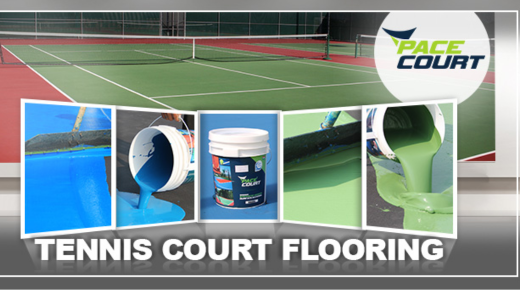Introduction
The construction of a tennis court is a meticulous process that requires careful planning, precision, and expertise. It begins with selecting an appropriate location, taking into account factors such as soil quality, drainage, and accessibility. The choice of surface material is crucial, as it significantly affects the playability and maintenance requirements of the court. Tennis court builders often recommend hard courts, clay courts, or grass courts, each offering unique benefits. Hard courts, for instance, are known for their durability and low maintenance, making them a popular choice among both recreational and professional players. On the other hand, clay courts offer slower ball speeds, providing players with more time to react, which can be advantageous for those focusing on strategy and endurance. Grass courts, though less common, are celebrated for their fast-paced play and soft surface, reducing impact on players’ joints.
Groundwork and Foundation
Once the surface type is decided, the construction process moves to the groundwork phase, which involves excavation and grading to ensure a level playing field. This is followed by the installation of a robust drainage system to prevent water accumulation, which is especially crucial for outdoor courts. The base layer is then laid, often composed of crushed stone or gravel, providing a stable foundation. For hard courts, an additional layer of asphalt or concrete is applied, followed by the chosen surface material, such as acrylic coatings for a smooth and consistent finish. The final step involves painting lines and adding accessories like nets and posts.
Choosing the Right Surface
The choice of surface material is crucial as it directly impacts the playability and maintenance of the court. Hard courts are popular for their durability and ease of maintenance, offering a consistent playing surface that suits various playing styles. Clay courts, while requiring more upkeep, provide a slower game and are easier on the joints, making them a favorite among many players. Grass courts, known for their fast play, require regular maintenance but offer a unique playing experience. Each surface type presents distinct advantages, and the choice often depends on the intended use and location of the court.
Innovations in Tennis Court Construction
Tennis court builders emphasize the importance of selecting high-quality materials and employing skilled professionals to ensure the longevity and performance of the court. Innovations in court construction, such as advanced synthetic surfaces and eco-friendly materials, are also becoming increasingly popular. These modern materials not only enhance the playing experience but also contribute to sustainability efforts in sports infrastructure. For example, cushioned acrylic surfaces have gained popularity due to their shock-absorbing properties, which help reduce the risk of injuries. These surfaces consist of multiple layers, including cushioning layers and top coatings, which can be customized in terms of color and texture, offering both functional and aesthetic benefits.
Maintenance and Longevity
The role of tennis court flooring cannot be overstated, as it directly impacts the speed and bounce of the ball, as well as the overall safety of the players. Therefore, investing in quality construction and regular maintenance is essential for any tennis facility looking to provide top-notch playing conditions. Regular maintenance includes cleaning the surface to remove debris and dirt, checking for any cracks or damage, and ensuring the nets and other accessories are in good condition. Additionally, professional resurfacing may be required periodically to restore the court’s playing characteristics and extend its lifespan. Tennis court builders and manufacturers often offer maintenance services, providing expert advice and solutions to keep the court in optimal condition.
Sustainability and Future Trends
The advancements in technology and materials have significantly influenced tennis court construction in recent years. For example, cushioned acrylic surfaces have become popular, providing a softer playing surface that reduces the risk of injury while still offering excellent ball performance. Another trend in tennis court construction is the incorporation of sustainable practices. This includes using eco-friendly materials, such as recycled rubber for the base layers, and installing energy-efficient lighting systems. Additionally, water-saving technologies, like efficient irrigation systems and permeable surfaces, help reduce water usage and manage stormwater runoff. These sustainable features not only benefit the environment but can also lower operational costs in the long term.
Collaboration and Expertise
Tennis court construction projects often involve collaboration between architects, engineers, and specialized contractors. This multidisciplinary approach ensures that all aspects of the project, from design to execution, meet the highest standards of quality and functionality. Architects may work on the overall layout and aesthetics, while engineers focus on structural integrity and drainage systems. Specialized contractors, particularly those experienced in sports facility construction, bring expertise in installing specific types of tennis court flooring and equipment. This collaboration is essential for achieving a court that meets the needs of players and complies with relevant regulations and standards.
Conclusion
In conclusion, tennis court construction is a complex and specialized field that requires careful consideration of various factors, including location, surface material, and construction techniques. Whether for professional tournaments or recreational use, the quality of the court can significantly impact the playing experience. By selecting the right materials and working with experienced tennis court builders, it is possible to create a court that not only meets but exceeds expectations in terms of performance, durability, and aesthetics. Furthermore, with ongoing innovations in materials and construction practices, the future of tennis court construction promises even more advanced and sustainable solutions, enhancing the enjoyment and safety of the game for players around the world.

